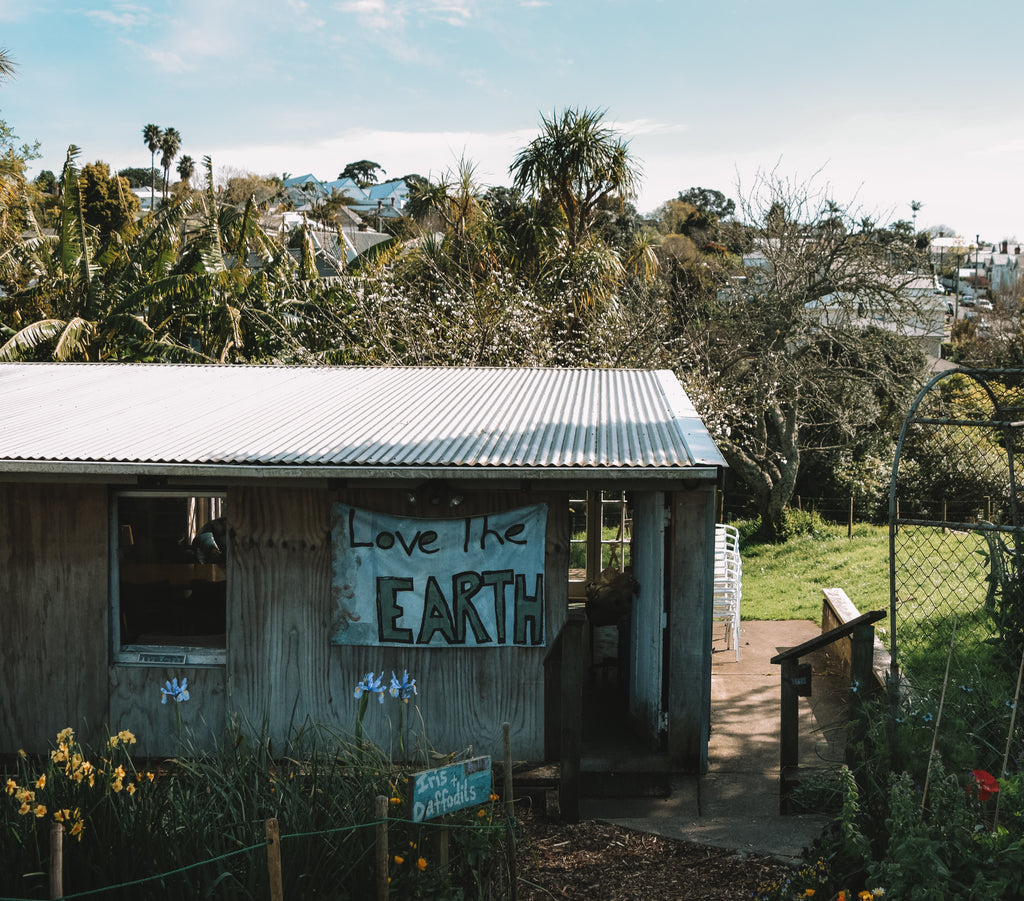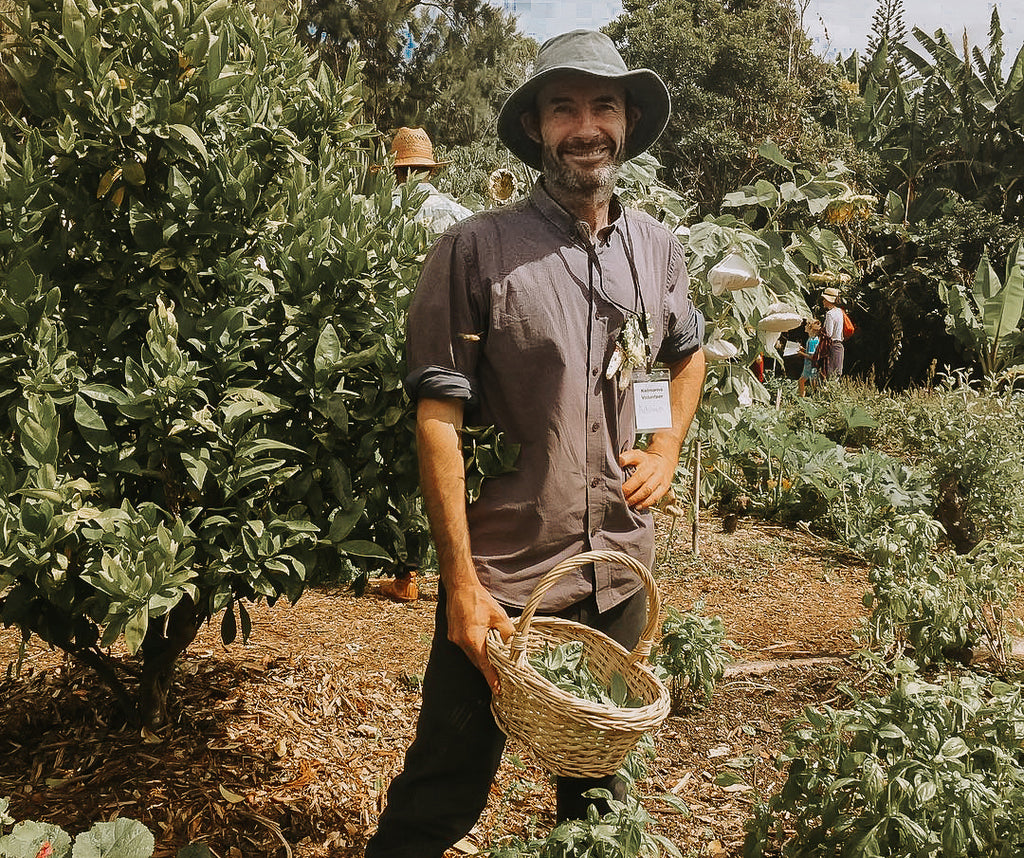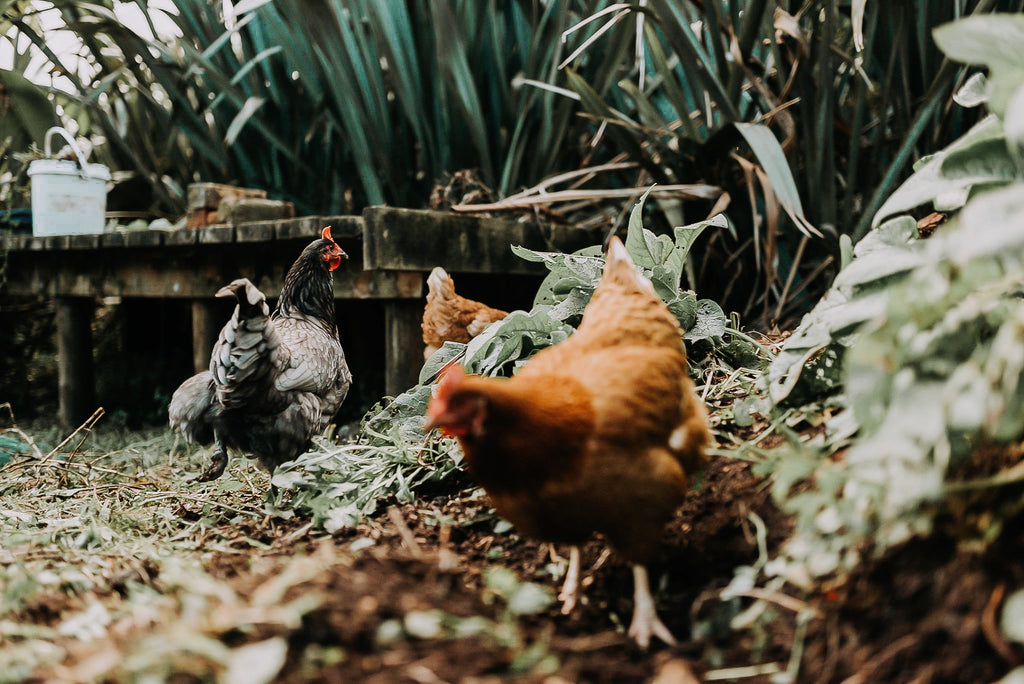
More than two-thirds of the world's population will live in cities by 2050 and urban agriculture can be crucial to feeding them, producing as much as 180 million metric tonnes of food a year — or about 10 percent of the global output of pulses and vegetables, according to a study published in 2018 by Earth's Future journal.
A prime example of how one community in the heart of Auckland city is encouraging urban agriculture is Kelmarna Gardens, a city farm and organic community garden.
Situated on 4.5 acres of land close to the heart of the city, we held our photoshoot for our Abundance capsule here. During our site reece and photoshoot, we were enthralled by the bountiful produce and natural beauty of the land. Step onto the grounds and you’re immediately transported to a countryside surrounded by chickens, vegetable gardens, a pony, a food forest, beehives, worm farms and native trees.

The lush city farm setting also opens the conversation on our journal for the food we eat and the journey it takes from soil to table. The collective approach of Kelmarna Gardens has not only made us reframe our perspective of how food is grown and how we interact within our community, but has also inspired us to go on a journey to bring you a series of stories from the people that grow, harvest, cook and serve sustainably.
For now, here’s a glimpse into the garden and our conversation with Gardens Manager, Adrian.

Alicia: When was Kelmarna Gardens established, and what were some of the reasons why this place came about?
Adrian: It was set up in 1981 to show how to grow food organically for city people.
Alicia: That’s a really long time. Has it been run by the community since its inception?
Adrian: It has had lots of different chapters; it’s always been a training enterprise. I guess it has always been run by the community because this is council land and it has been leased by a group of people - that’s the Kelmarna Trust - so that’s the community running it. And they have subleased it and gotten contractors like me or Andy to work.
Alicia: How has this benefited the community and the environment?
Adrian: It provides a community space, a place for people to bump into each other or just go to, to enjoy our lovely environment. The Kelmarna Trust has two charitable aims now; it started with just showing how to grow [produce] organically. Now, it’s not just how to grow organically; we want to [be able to use the space] to talk about sustainability, starting with food. Because all aspects of our lives need to be sustainable.
Alicia: Definitely, and I think that food is a really big part of that.
Adrian: I always ask what are the [basic] necessities? Food, shelter and clothing. It’s quite hard to grow cotton to make a dress but you can grow potatoes relatively easily. It’s hard to build a house, but food is an easy place to start. We are gardening organically, and then we are always trying to improve and find ways to be more efficient.
There’s a lot of focus now on climate change, so we’ve been doing lots of research on increasing our understanding of what role places like this can play in climate change. And it comes down to soil – because carbon in the atmosphere - no good; carbon in the ocean - no good; carbon in the soil - very good. [Too much carbon] in the atmosphere, too much in the ocean, not enough in the soil. Modern farming largely relies on artificial fertilizers, so they’re giving the plants nitrogen, phosphorus, potassium in an artificial form, and they’re not providing nice habitats for the microbes and not capturing carbon. So we feel that by gardening ethically, we’re able to capture more carbon.

"When you spend money, you’re supporting something that is good, that is making life better for people in the planet. You vote with your wallet and decide what you’re supporting. There’s been a large focus on that, but I think we need to make sure we’re not just consumers or just checking the green option. You want to be actively producing as well, you want to be giving back."
-

"Look at your system, look at what you’re making and if there is waste. If there’s waste, then it’s not good. For example, if you’re making clothing, make sure you’re using cotton and not polyester fibres, because polyester can’t go into the compost."
-
Alicia: Are you able to share some organic and sustainable gardening practices?
Adrian: Well, everything comes back to the soil. You want beautiful soil. Before growing food or plants, step one is always growing the soil. You got to have at least 40cm of nice dark and friable soil. Grow the easy things, the things that are reliable, like salad plants for summer, beans, courgettes, cucumbers, potatoes, pumpkins (if you’ve got space), do the low hanging fruit which are the easy ones.
Alicia: Literally.
Adrian: Avoid things like capsicums and eggplants - as much as they are lovely to eat - they are kind of hard [to grow] in this climate. Before you plant anything, do a little bit of research about it. If you haven’t grown tomatoes, read about what a tomato likes, because every plant has got a slightly different story. That’s the main thing that people often get wrong, and it’s a fundamental mistake, and it’s easily avoidable.
Alicia: I read on your website that you rely on a permaculture model. Why is this important in today’s society and agricultural systems?
Adrian: Permaculture is hard to define because it’s a philosophy. From my thinking and study around sustainability, the principles of permaculture are about the nicest principles around. They have [values] like, produce no waste. [It applies across the board]. Look at your system, look at what you’re making and if there is waste. If there’s waste, then it’s not good. For example, if you’re making clothing, make sure you’re using cotton and not polyester fibres, because polyester can’t go into the compost. So permaculture has these really nice principles that can apply across society.
Another one – integrate don’t segregate, so you should always be trying to integrate things. Permaculture started out being about a gardening, but now it’s just a way of how to make humanity sustainable.
Alicia: So it’s more of a circular way of looking at things. Do people in the neighbourhood come into the gardens and plant their own produce?
Adrian: We’re not an allotment system, so we don’t have places to give out to people. We give out plots to people who have therapeutic needs. We’re supporting people with mental illness, autism and so on.

Alicia: Why is it important for people to view the way the food they grow and purchase and eat in a sustainable way?
Adrian: When you spend money, you’re supporting something that is good, that is making life better for people in the planet. You vote with your wallet and decide what you’re supporting. There’s been a large focus on that, but I think we need to make sure we’re not just consumers or just checking the green option. You want to be actively producing as well, you want to be giving back.
Alicia: And what happens to surplus?
Adrian: We sell it to some restaurants, and we get customers who come in on Wednesday, Thursday and Friday, and we go to the Grey Lynn farmer’s market on Sunday. We sell stuff and we also grow stuff to feed our volunteers, our staff during lunchtime. We’re trying to be more of a market garden, to be more self-sufficient financially, because we are a charity and we’re not able to sustain ourselves from what we grow alone. But we’re always trying to get better. We’ll never be a complete market garden because our money is used to support our charitable aims. But there’s lots of scope to become better at gardening.

Alicia: What are some of the more unique or rare things that are grown here?
Adrian: Well, we have white sapote [also known as] white custard apple, I’m not interested in rare for the sake of rare… it has to be productive. We have loads of edible weeds like Alexanders, Chickweed, so we have a real awareness about the types of edible weeds. We try not to have too many weeds in our vegetable garden, but we do have a big zone, what we call zone 2, around our fruit trees, where we allow nature to run a little more wild. We’ve been growing Shiso, for the first time since last year, and the restaurants get pretty excited about that.
Kelmarna Gardens is located at 12 Hukanui Crescent, Ponsonby, Auckland 1021. Their shop opens Wednesday - Friday, 10am - 4pm.

